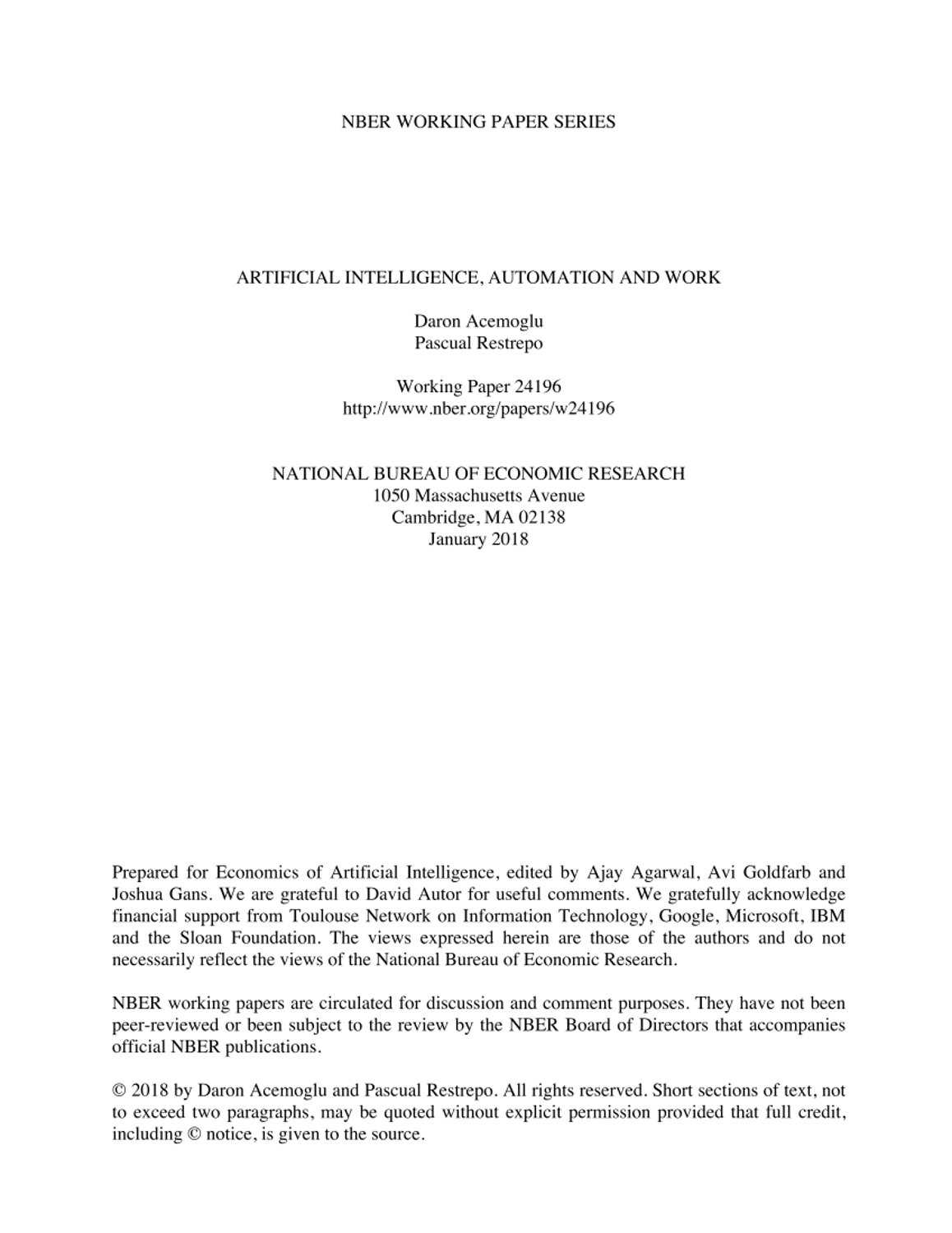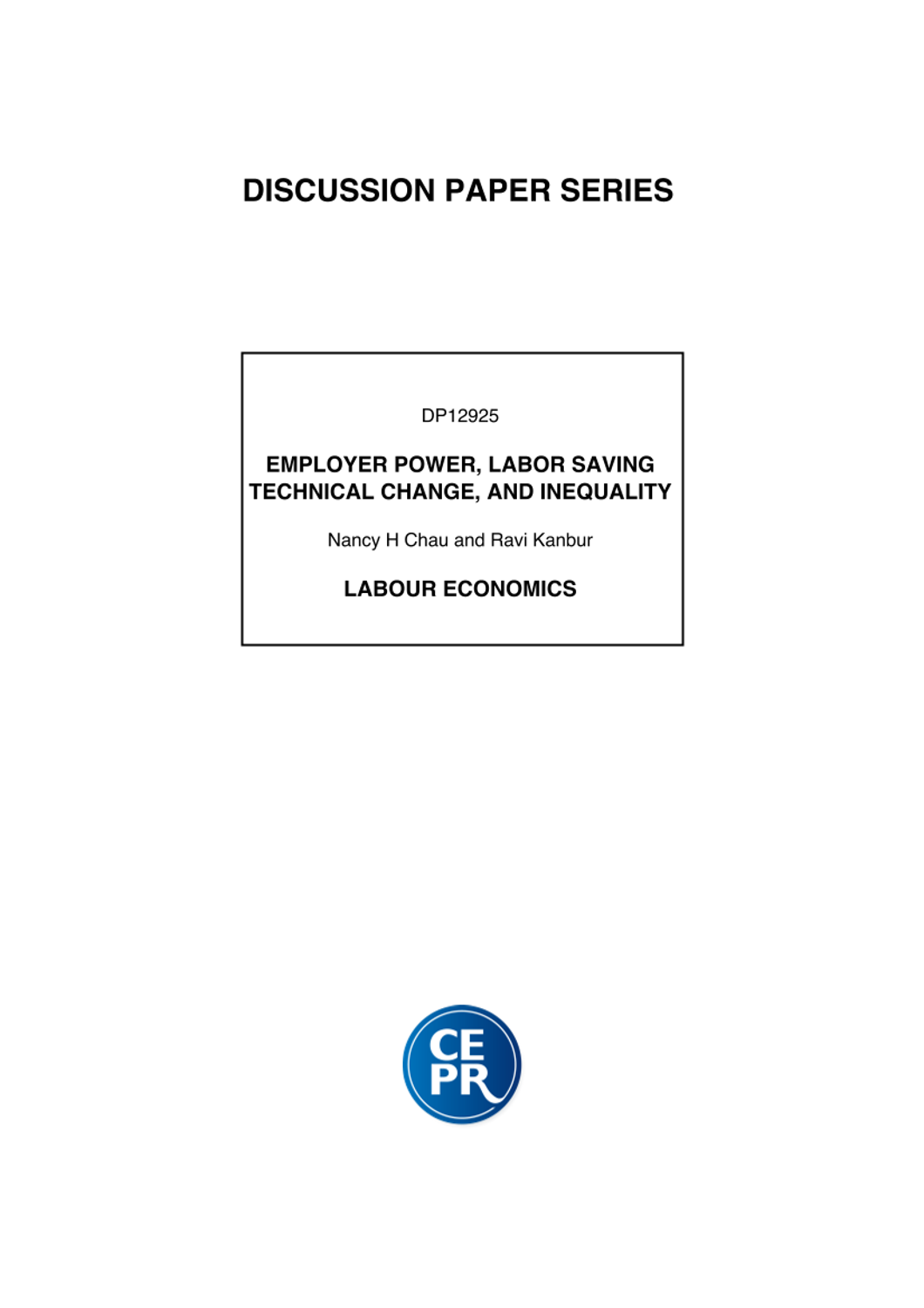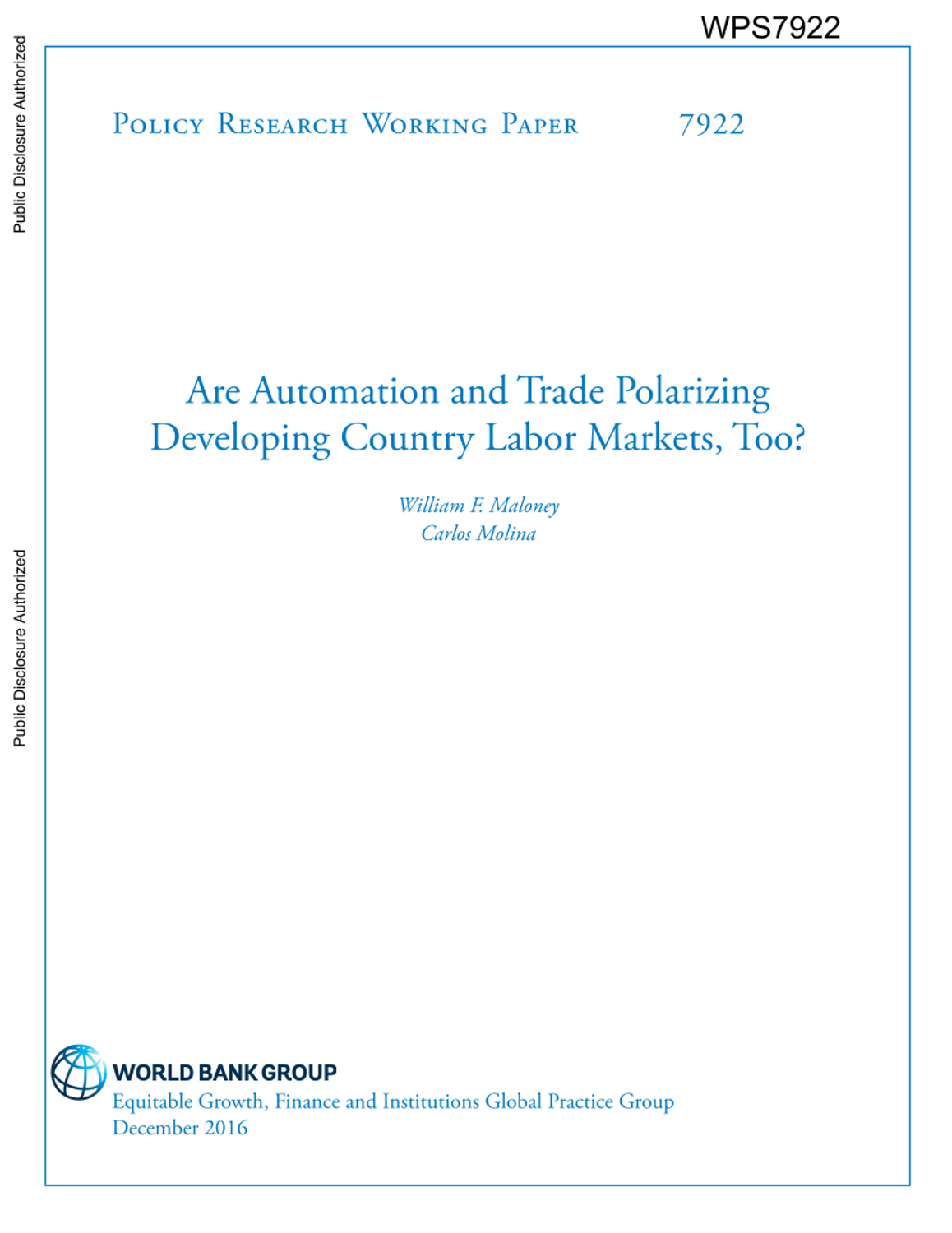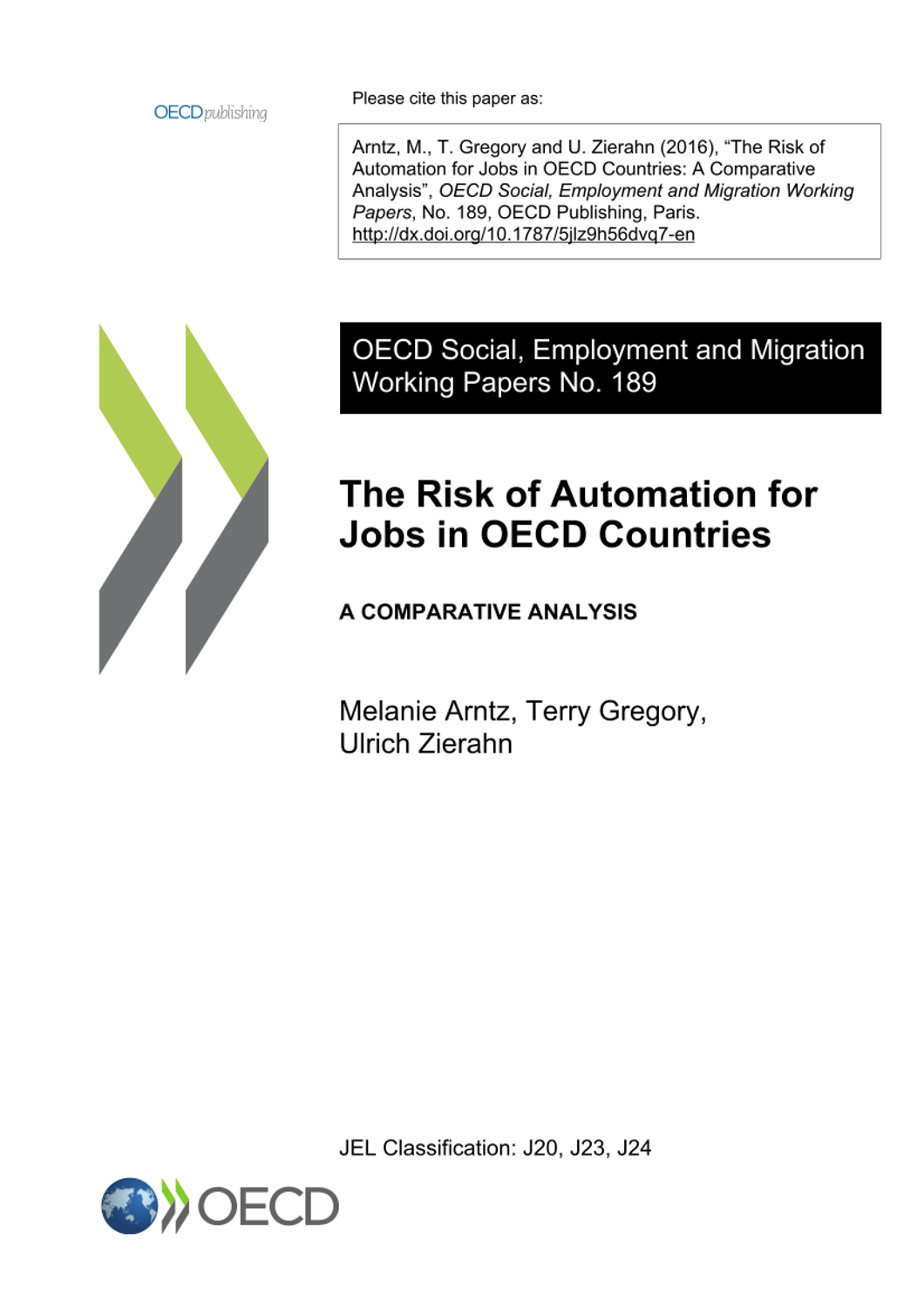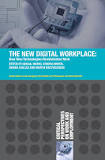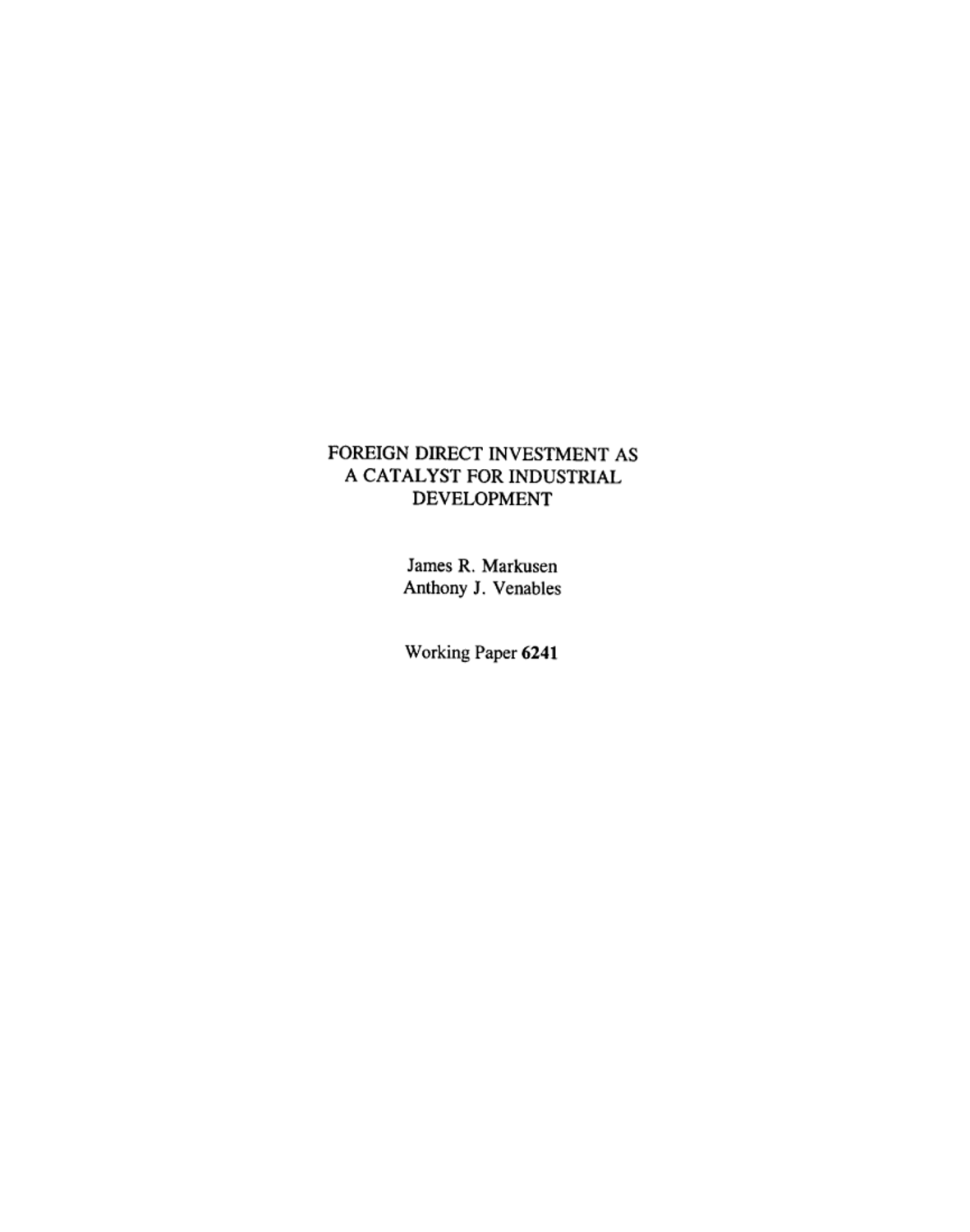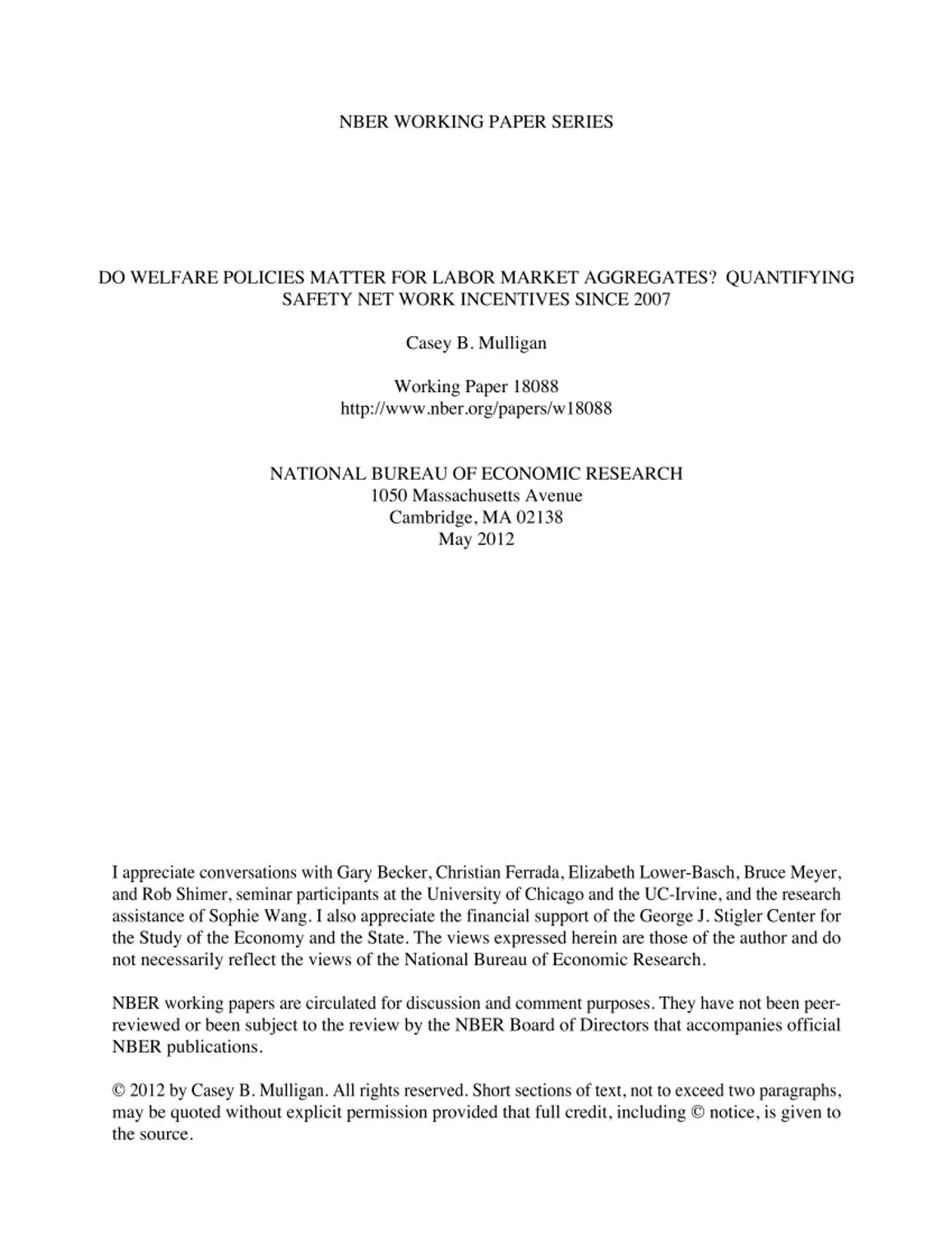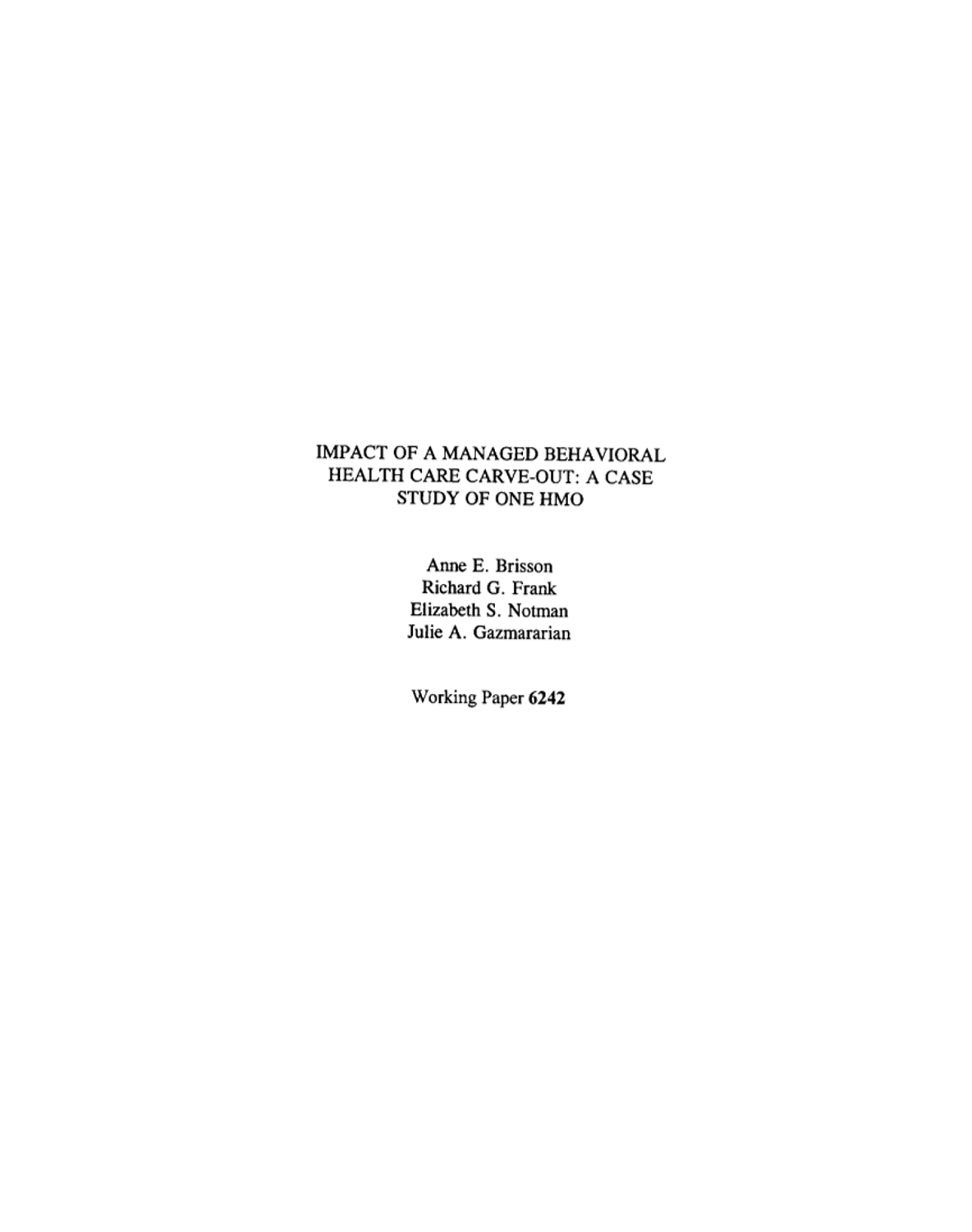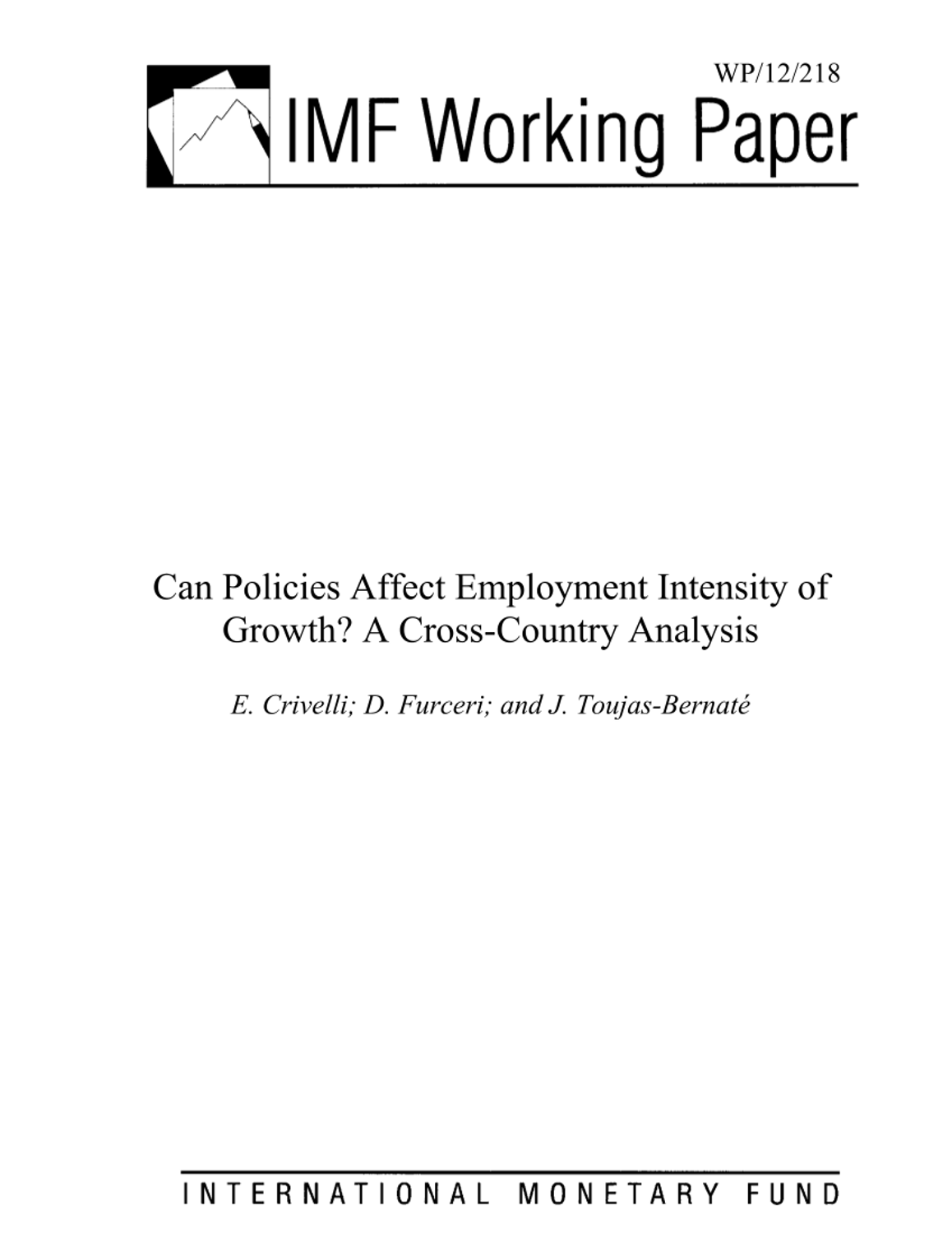단행본NBER Working Paper 24196
Artificial intelligence, automation and work
- 청구기호
- WP 24196
- 발행사항
- Cambridge : NBER, 2018
- 형태사항
- 43 p. :. PDF file ;. 331 KB
- 분류기호
- 듀이십진분류법->WP
- 키워드
- artificial intelligence,, automation,, labor,, wages,, employment
소장정보
| 위치 | 등록번호 | 청구기호 / 출력 | 상태 | 반납예정일 |
|---|---|---|---|---|
이용 가능 (1) | ||||
| E0002857 | 대출가능 | - | ||
이용 가능 (1)
- 등록번호
- E0002857
- 상태/반납예정일
- 대출가능
- -
- 위치/청구기호(출력)
책 소개
We summarize a framework for the study of the implications of automation and AI on the demand for labor, wages, and employment. Our task-based framework emphasizes the displacement effect that automation creates as machines and AI replace labor in tasks that it used to perform. This displacement effect tends to reduce the demand for labor and wages. But it is counteracted by a productivity effect, resulting from the cost savings generated by automation, which increase the demand for labor in non-automated tasks. The productivity effect is complemented by additional capital accumulation and the deepening of automation (improvements of existing machinery), both of which further increase the demand for labor. These countervailing effects are incomplete. Even when they are strong, automation in- creases output per worker more than wages and reduce the share of labor in national income. The more powerful countervailing force against automation is the creation of new labor-intensive tasks, which reinstates labor in new activities and tends to increase the labor share to counterbalance the impact of automation. Our framework also highlights the constraints and imperfections that slow down the adjustment of the economy and the labor market to automation and weaken the resulting productivity gains from this transformation: a mismatch between the skill requirements of new technologies, and the possibility that automation is being introduced at an excessive rate, possibly at the expense of other productivity-enhancing technologies.

